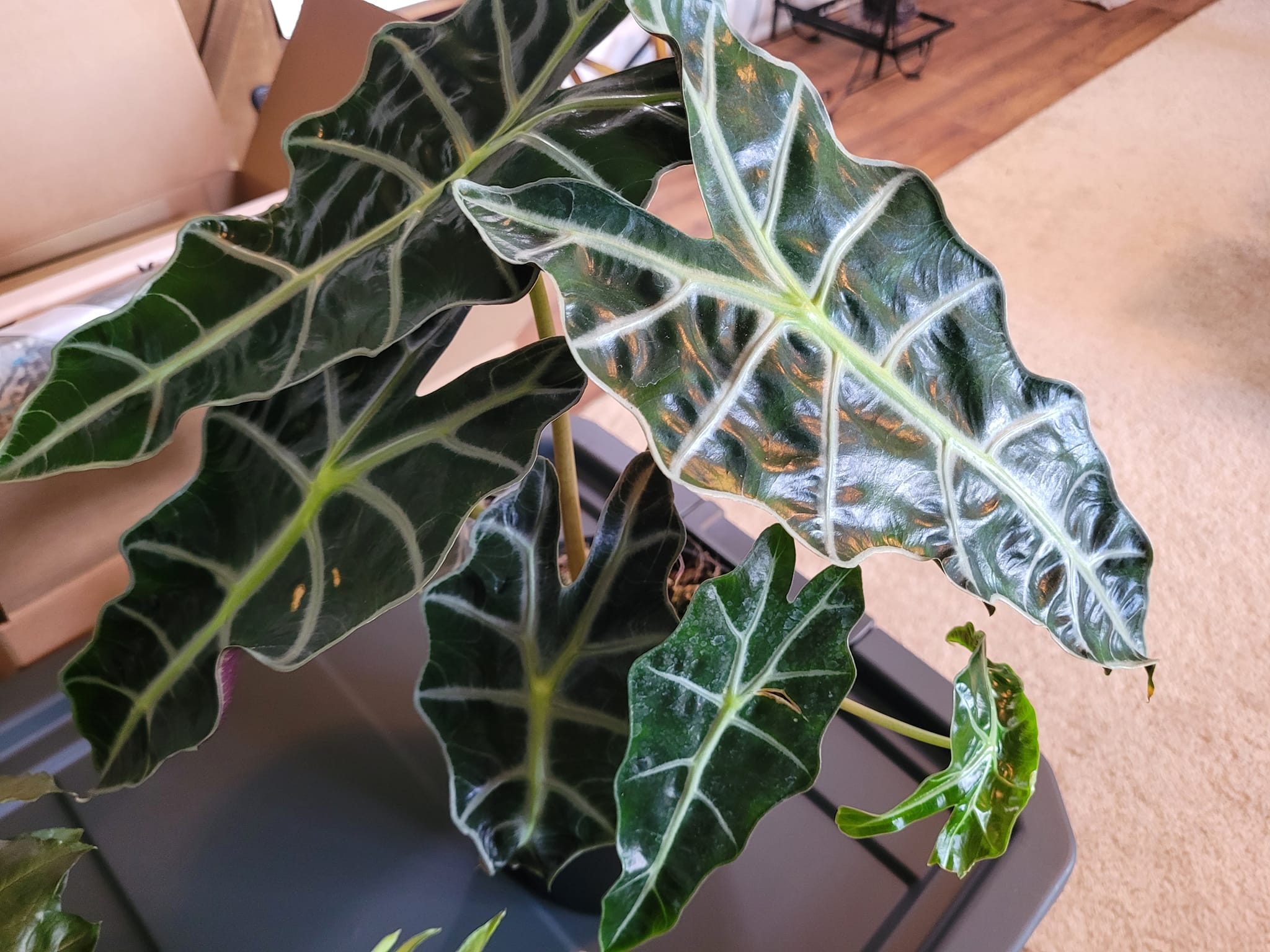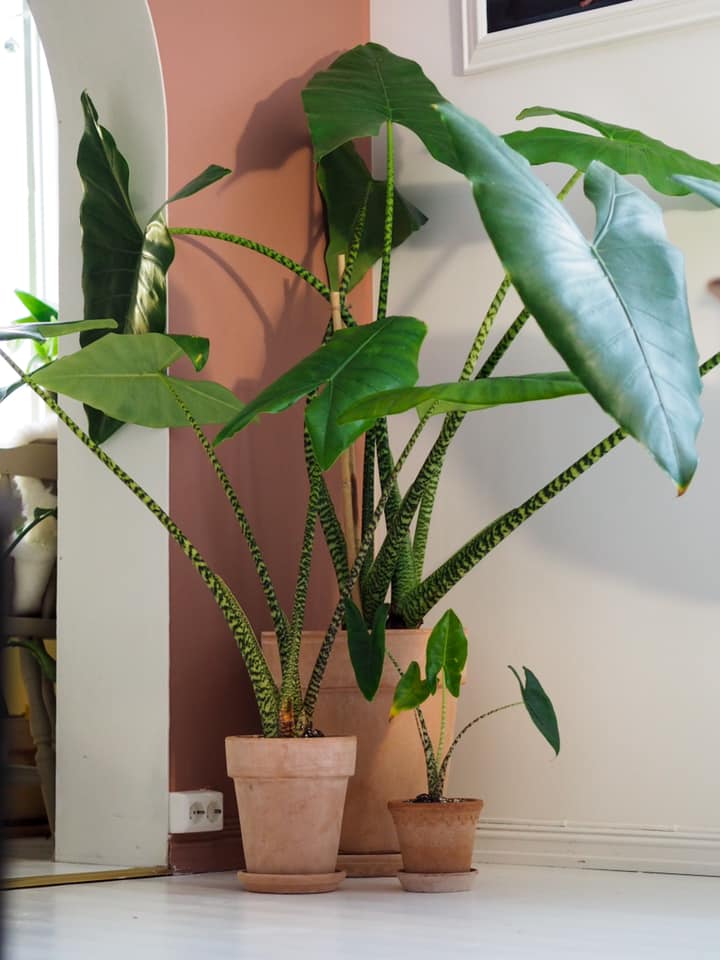
If you’re looking to add a touch of the exotic to your indoor garden, Alocasia plants are an excellent choice. With their striking foliage and unique, elephant ear-shaped leaves, these tropical beauties can transform any space into a lush, green paradise. However, while they are undoubtedly eye-catching, Alocasia plants can be a bit finicky, especially for beginners. But don’t worry! This guide will walk you through everything you need to know to grow and care for Alocasia plants successfully. From understanding their specific needs to troubleshooting common problems, you’ll soon have the confidence to nurture these stunning plants into healthy, thriving specimens.
What Makes Alocasia Plants So Special?
The Allure of Alocasia: Why Choose This Plant?
Alocasia plants, often referred to as “Elephant Ear” plants, are native to the tropical regions of Asia and Eastern Australia. Their large, heart-shaped leaves with bold veining are their most distinctive feature. The leaves can range in color from deep green to silver, with some varieties showcasing a striking mix of hues. These plants are not just about looks; they also contribute to improving indoor air quality, making them a healthy addition to your home.
Types of Alocasia Plants
Before diving into care tips, it’s essential to know that there are many varieties of Alocasia, each with its unique characteristics. Here are a few popular types:
1. Alocasia Polly

Known for its deep green, arrow-shaped leaves with white veins.
2. Alocasia Amazonica

A hybrid variety with dark green leaves and bold white veining.
3. Alocasia Zebrina

 @plantegutt
@planteguttFeatures distinctive zebra-striped stems and large, glossy leaves.
4. Alocasia Silver Dragon

Boasts silvery-green leaves with dark green veins.
Understanding the specific needs of your Alocasia variety can help you tailor your care routine for the best results.
How to Grow Alocasia Plants
Choosing the Right Location
The first step in growing a healthy Alocasia plant is finding the perfect spot in your home. Alocasia plants thrive in bright, indirect light. Too much direct sunlight can scorch their delicate leaves, while too little light can lead to slow growth and dull foliage. A spot near a north or east-facing window is ideal. If you notice your plant’s leaves starting to droop or lose their vibrant color, it may need more light.
Planting and Soil Requirements
Alocasia plants prefer well-draining soil that retains some moisture without becoming waterlogged. A mix of potting soil, peat, and perlite is ideal. This combination allows for good drainage while maintaining the right level of moisture for the plant’s roots.
When planting your Alocasia, choose a pot that is slightly larger than the root ball, with drainage holes to prevent water accumulation. Alocasia plants grow quickly, so be prepared to repot them every year or so to give their roots more room.
Watering Your Alocasia Plant
Watering is one of the most critical aspects of Alocasia plant care. These plants like their soil to be consistently moist but not soggy. Overwatering can lead to root rot, while underwatering can cause the leaves to droop and brown. Here’s how to get it just right:
- Check the Soil: Before watering, check the top 1-2 inches of soil. If it feels dry, it’s time to water. If it’s still moist, wait a few more days.
- Water Thoroughly: When you do water, make sure to water thoroughly until water drains out of the bottom of the pot. This ensures that the entire root system gets hydrated.
- Humidity Matters: Alocasia plants thrive in high humidity. If the air in your home is dry, consider using a humidifier or placing the plant on a tray of water with pebbles to increase moisture around it.
Fertilizing Your Alocasia Plant
Alocasia plants are heavy feeders and benefit from regular fertilization during their growing season, typically from spring to early autumn. A balanced, water-soluble fertilizer diluted to half strength works well. Fertilize your plant every 2-4 weeks during this time. In the winter months, when the plant’s growth slows down, reduce the frequency of fertilization to avoid nutrient buildup in the soil.
How to Care for Alocasia Plants
Pruning and Maintenance
Regular pruning helps keep your Alocasia plant looking its best and encourages healthy growth. Remove any yellowing or damaged leaves with clean, sharp scissors. This not only improves the plant’s appearance but also prevents the spread of disease.
Alocasia plants are also prone to dust buildup on their large leaves. Wipe the leaves down with a damp cloth every few weeks to keep them clean and allow for optimal photosynthesis.
Managing Pests and Diseases
Despite your best efforts, your Alocasia plant may occasionally attract pests or fall victim to diseases. Here’s how to handle common issues:
- Spider Mites and Aphids: These tiny pests can suck the sap from your plant’s leaves, causing them to yellow and wilt. Use insecticidal soap or neem oil to treat the infestation. Regularly misting the plant can also help deter these pests, as they thrive in dry conditions.
- Root Rot: Caused by overwatering, root rot is a serious issue that can kill your Alocasia plant if not addressed promptly. If you notice yellowing leaves and a foul smell from the soil, remove the plant from its pot, trim away any rotting roots, and repot it in fresh, well-draining soil.
- Leaf Spot: Fungal infections like leaf spot can cause dark, water-soaked spots on the leaves. To prevent this, avoid getting water on the leaves when watering and ensure good air circulation around the plant. If you notice spots, remove the affected leaves and treat the plant with a fungicide.
Seasonal Care Tips
Alocasia plants have specific needs depending on the season. Here’s how to care for your plant throughout the year:
- Spring and Summer: This is the growing season for Alocasia plants. During these months, increase watering, maintain high humidity, and fertilize regularly to support new growth.
- Fall and Winter: In colder months, Alocasia plants enter a dormant period. Reduce watering and stop fertilizing. The plant may lose some leaves during this time, which is normal. Resume regular care in the spring when new growth appears.
Troubleshooting Common Alocasia Problems
Why Are My Alocasia’s Leaves Turning Yellow?
Yellow leaves are often a sign of overwatering, but they can also indicate a nutrient deficiency or insufficient light. Check your plant’s environment and care routine to identify the cause.
What Should I Do If My Alocasia Is Drooping?
Drooping leaves can result from underwatering, low humidity, or lack of light. Ensure your plant is getting enough water and humidity, and consider moving it to a brighter spot.
How Can I Encourage My Alocasia to Grow Larger Leaves?
To encourage larger leaves, ensure your Alocasia is receiving enough light, humidity, and nutrients. Regular feeding during the growing season and maintaining consistent moisture levels can help.
Conclusion
Alocasia plants are undeniably striking and can make a stunning addition to any indoor garden. While they do require a bit more attention than some other houseplants, the effort is well worth it when you see those magnificent leaves unfurl. By following the tips in this guide, you’ll be well on your way to growing a healthy, vibrant Alocasia plant that will be the envy of every plant lover. Whether you’re a seasoned gardener or a complete beginner, with a little care and patience, your Alocasia plant can thrive and bring a touch of the tropics into your home.
